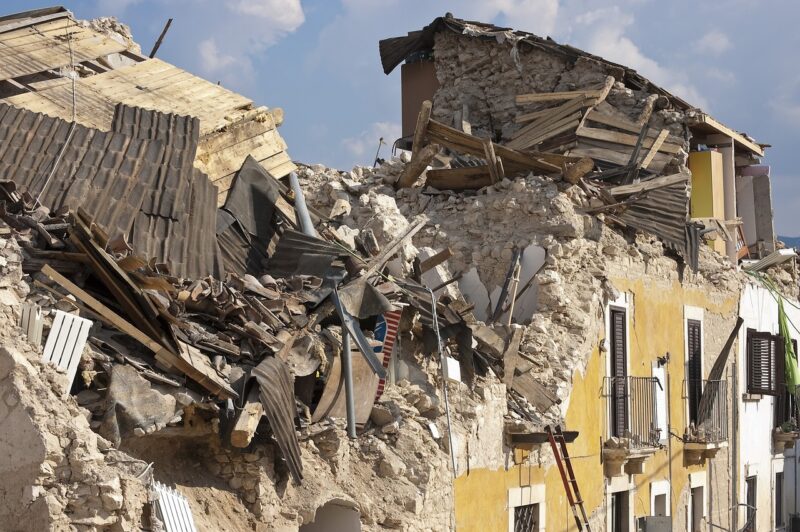How Mathematics Predicts Natural Disasters: The Science Behind Earthquake and Storm Models
November 12, 2024

Mathematics plays a crucial role in understanding the world around us, notably in predicting natural disasters like earthquakes and storms. It allows scientists to model complex systems, analyze massive amounts of data, and, most importantly, apply statistical techniques to predict future events. This article delves into the mathematical concepts and techniques that underlie these predictions, shedding light on how they can save lives and mitigate damage.
1. The Importance of Predicting Natural Disasters
Natural disasters are unpredictable, and their impact can be devastating. In places like California, Japan, and the Gulf of Mexico, these events can be deadly, causing loss of life, property damage, and long-lasting economic repercussions.
The objective of prediction models is not to eliminate natural disasters but to give people enough time and information to prepare and respond effectively. By employing advanced mathematical models, scientists aim to equip governments and communities with vital knowledge to withstand the effects of nature.
2. Predicting Earthquakes: The Role of Seismology
Earthquakes are caused by the movement of tectonic plates beneath the Earth’s surface. To predict potential seismic activities, geoscientists rely on seismic data collected through networks of seismographs. Mathematics is employed in various ways:
- Statistical Analysis: Researchers use statistical methods to analyze historical earthquake data, identifying patterns and establishing probabilities of future seismic events in specific regions. Common statistical methods include time series analysis, extreme value theory, and probabilistic seismic hazard assessment.
- Modeling & Simulations: Mathematical models simulate seismic waves as they propagate through the Earth’s crust. Numerical methods such as finite difference or finite element methods are used to solve complex differential equations that describe the behavior of these waves.
- Machine Learning Techniques: In recent years, machine learning has emerged as a powerful tool for predicting earthquakes. By feeding extensive datasets into algorithms, models are trained to recognize patterns that precede seismic activity, potentially improving prediction accuracy.
By utilizing these mathematical approaches, scientists continuously work on enhancing earthquake prediction to minimize its impact.
3. The Science of Storm Prediction
Storm prediction is another area where mathematics plays a vital role. Techniques used to forecast weather-related disasters include:
- Numerical Weather Prediction (NWP): NWP employs mathematical models to simulate the atmosphere’s behavior based on physical laws, allowing for predicting weather patterns. These models rely on computational fluid dynamics to understand how wind, moisture, and temperature interact. The data is fed into supercomputers to generate forecasts.
- Statistical Methods: In addition to NWP, statistical techniques assess the reliability and accuracy of weather predictions. Techniques such as regression analysis and ensemble forecasting are used to evaluate multiple prediction models, thereby considering uncertainties in predicting storm events.
- Geostatistical Techniques: These methods are utilized to analyze spatial data for storm patterns, addressing challenges such as tracking hurricanes or tornadoes based on past storm data. They help improve the understanding of how storms develop and dissipate over time, allowing for better restraint plans.
Storm prediction models have significantly advanced through the integration of mathematics and technology, leading to more accurate forecasts.
4. Real-World Implications of Disaster Prediction
The mathematical predictions of natural disasters have profound real-world implications. Some of the key benefits include:
- Emergency Management: By accurately forecasting earthquakes and storms, emergency management agencies can develop effective response plans, including resource allocation, evacuation procedures, and public awareness campaigns. Awareness can save lives, reducing the number of casualties during disasters.
- Insurance & Financial Planning: Insurance companies factor predictions into risk assessment models to determine premiums. Accurate risk assessments allow them to proactively handle claims in disaster-prone areas, potentially mitigating losses incurred during natural disasters.
- Infrastructure Resilience: Urban planners and civil engineers use predictive modeling to design and construct buildings and infrastructure that can withstand natural disasters, reducing vulnerability to such events and enhancing the safety of communities.
As we see, the applications of mathematical models extend beyond the scientific community, ultimately leading to improved societal resilience against natural disasters.
5. Future Directions in Disaster Prediction
The field of disaster prediction is evolving rapidly with advancements in technology and mathematics. Emerging trends include:
- Artificial Intelligence (AI): AI and deep learning are being explored to enhance predictive models further. By analyzing big data from various sources (like social media, satellite imagery, and sensor networks), AI can provide real-time insights that complement traditional models.
- Improved Data Collection: Innovations in data collection, such as drones and IoT devices, are allowing researchers to gather more comprehensive data on various environmental parameters. This data can greatly inform and refine mathematical models for better disaster predictions.
- Interdisciplinary Collaboration: Increased collaboration between mathematicians, geoscientists, meteorologists, and computer scientists is crucial for improving predictions. This multidisciplinary approach is essential for tackling complex problems associated with natural disasters, leading to innovative mathematical solutions.
The future of disaster predictions appears promising as we integrate technology with mathematical models, leading to improved forecasting techniques.
Conclusion
In conclusion, the role of mathematics in predicting natural disasters cannot be overstated. From understanding the mechanics of earthquakes to forecasting storms, mathematical models are crucial for mitigating the impacts of these catastrophic events. As technology continues to advance, so will our ability to predict and respond to natural disasters more effectively, ultimately saving lives and minimizing damage around the globe. Through the integration of artificial intelligence, improved data acquisition, and interdisciplinary collaboration, we can look forward to continued advancements in natural disaster prediction, enhancing preparedness and resilience in the face of nature’s unpredictability.






